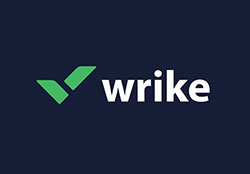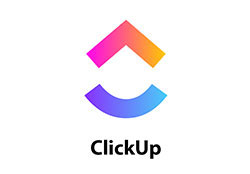Imagine crafting a roadmap, only to spot an unexpected detour sign. That’s lag time in project management for you — unanticipated but inevitable. In the orchestra that is project execution, every beat counts, and when lag time sneaks in, it’s a solo no conductor ever desires.
It’s the silence that disrupts the melody of progress.
This article is your guide through the rhythmic complexities of project timelines and scheduling hiccups.
I’ll take you from frown to full command, transforming lag time from a project’s pitfall to a managed, strategic component in your planning symphony.
You’ll emerge equipped with tactics to not merely react to lag but to harness it, ensuring your project’s performance sings in harmony with your expectations.
Dive in, and let’s dissect the intricacies of schedule delays, decode the DNA of task dependencies, and architect buffers that dance to the tune of time-management.
By the final note, you’ll unlock the conductor in you, leading projects with tempo and precision.
Key takeaways
- Lead time measures the duration needed to complete a task or project, often utilized in schedule compression, while lag time represents the waiting period between dependent tasks, impacting the project flow.
- Project managers use specific diagramming methods like ADM and PDM to identify lag times and dependencies, which are crucial for creating accurate project timelines and managing task sequences.
- Performance evaluation involves reviewing the project timeline and work breakdown structure (WBS), using real-world examples and ensuring key activity dependencies align with the critical path method (CPM).
- Understanding potential mishaps and their impacts allows project managers to create workarounds, such as adjusting start times for activities, to maintain the project timeline and manage resource constraints effectively.
What Does Lead Time Mean for Project Managers
Complex projects comprise several steps; one segment must finish to start the next two or more tasks, showcasing the importance of task dependency.
Hence, the term lead time refers to the period needed for a one-time project or a crucial step. As a whole, it shows how fast the team was with the project timeline.
Therefore, the project management team envisions the lead time beforehand, often using tools like Gantt charts and network diagrams.
Of course, if the goal changes mid-work, that projection will need an update. If done right, the lead time can serve as insurance for the completion of the work package, ensuring resource allocation is optimal.
When following the critical path method (CPM), the lead time can track each task’s progress from start to finish.
Conversely, lead time also applies to tasks that have overlapping starting times. For example, if the follow-up task (the successor activity) begins before the previous one ends, indicating a start-to-start dependency.
As a result, lead time, when viewed in the context of duration estimation, is not always a usable factor. Still, even when it has a negative value, it can be useful for project schedule management.
Also, managers often use the lead time with schedule compression techniques like fast-tracking and even consider it during risk management to anticipate potential delays.
What Does Lag Time Mean for Project Management
On the other hand, lag time refers to the downtime between two tasks due to accidents or task delays. For instance, when one task depends on the completion of the predecessor activity in a task dependency scenario. If there are issues with the prior task, there’ll be a lag time for the successor activity.
Other than that, this metric also refers to any delays between the tasks, which can be a result of not adhering to the project timeline. The reasons for this can be diverse, ranging from resource allocation issues to unforeseen project constraints. But, if the team can foresee them using tools like Gantt charts or PERT, they can calculate those lag times in the timetable.
Usually, such lag times last for one or two days in a finish-to-start relationship, a common sequence activity. The team should be aware of this beforehand to ensure no other tasks suffer during that time. So, the project manager should set that lag time as a positive value in the project lifecycle.
Naturally, there can be many types of lag time in project management. They can even play the part of a safety net. Yet, the schedule network diagram should highlight them either way. In that way, the project team can oversee the chain of events better and ensure they’re following the critical path.
If the project planning phase fails to underline all lag times, it can lead to delivery delays. Then, if such problems keep on repeating, they can result in severe budget issues and disrupt the work breakdown structure (WBS).
Lead Time vs. Lag Time in Project Management

- The lead time metric shows the time saved between activities, reflecting the project schedule management. On the contrary – lag time refers to the waiting period before the work resumes. Hence, there’s a list of the usual lag indicators.
- Lead times measure the time required for a single task or the whole project to finish, often used in schedule compression. Lag time is the value of how much dependent tasks affect each other. In an activity sequencing process, both metrics are important.
- In some cases, the lead time is merely the planned route, while the lag time is the result. This is mostly the case when an accident halts the progress, emphasizing the need for risk management.
- In practice, managers use the “-” to mark lead times (i.e., FS-3). Since lag is idle time, the diagram shows it as a “+,” i.e., FS+3.
- For two tasks to create a lead time, they should overlap at a certain point. If there’s downtime, it becomes a lag time.
How Managers Deal With Lag Time in Project Management
When crafting the network diagram, project managers shortlist the obvious lag indicators. That way, they build an idea for the overall project lag time. There are two routes for this task: the Arrow Diagramming Method (ADM) and Precedence Diagramming Method (PDM), both essential tools in project timeline creation.
What sets them apart is their compatibility. So, the PDM method can use four types of dependencies, reflecting the intricacies of task dependency. The list includes the start-to-finish, start-to-start, finish-to-start, and finish-to-finish types.
For the lead time metrics, only the finish-to-start working tasks are the focus. They occur when the next task cannot commence before the predecessor activity ends. In such cases, any lag time affects both of the tasks in the sequence, emphasizing the importance of duration estimation.
Therefore, a project can have several types of both lead and lag times. For example, the follow-up task will begin while the first one is still ongoing. Similarly, an accident will happen that produces a two-day lag time before the successor activity, highlighting the need for time management.
Then, project managers will denote any and all such instances. If they need to make up for a period of time due to lag, they’ll put a positive value. Otherwise, any time savings produce a negative number in the network diagram, showcasing schedule variance.
Lag Time in Project Management – The Common Lag Indicators
To evaluate performance at the end of the project, managers inspect every step of the way, often referring to the project timeline and work breakdown structure (WBS).
Also, they use real-world examples as reference points, similar to case studies in project scheduling.
Then, they review each of the key activity dependencies, ensuring that the critical path method (CPM) was followed and that all sequence activities were aligned.
Such an approach allows them to identify the total duration of the effective workflow and assess any schedule variance.
Another byproduct, especially when using tools like Gantt charts and network diagrams, is the ability to consider any lag indicator in time.
So, if a project has a few recurring tasks, the team can recognize certain patterns, emphasizing the importance of duration estimation.
In that way, they can set new goals, adhere to the project lifecycle, and keep on improving, ensuring that they’re always on the path of project schedule management and risk management.
Are you looking for a great project management app?
Here are our recommendations:
Lead and Lag Time in Project Management – Practical Appliances
Knowing which mishaps can cause a slowdown, especially when considering the project lifecycle, serves to soften the blow. In other words, it creates the space necessary to find a workaround. If possible, using insights from project scheduling, you can assign an early start to the second activity and free up some room for errors, ensuring that the project timeline remains intact.
In practice, tasks, especially those highlighted in the work breakdown structure (WBS), often take three to four days to complete. So, that makes a total of seven days for two tasks. However, the second activity, when considering task dependency, often follows a two-day lag time. Thus, the result is a total working time of nine days.
With that in mind, the manager can schedule the successor task to start two days before the end date of the first leg of the project. By making that change, and adhering to the critical path method (CPM), the total period will amount to only seven working days. Granted, there might be resource constraints preventing this option.
If all goes smoothly, the project leads, while focusing on project schedule management, will denote the time saved as a “-” sign. For this example, the total duration will read 9-2=7.
How to Properly Utilize the Lead and Lag Times
This important concept focuses on the task of ironing out the common road bumps within a project, ensuring that the team follows the critical path.
After using the PDM method, the team will spot the logical relationships they can later use. Hence, they can make them more or less flexible with leads and lags, optimizing the project timetable.
At the same time, this allows them to make the right changes mid-work. Various optimization strategies (like the critical path method and schedule compression) encourage that approach. For example, fast-tracking, a popular schedule compression technique, is one of the most effective time-saving techniques.
FAQ On Lag Time In Project Management
What exactly is lag time in project management?
Lag time often feels like the hidden speed bump on a project’s roadmap. It’s the wait period between tasks where a successor kicks off only after the predecessor’s dust has settled.
It’s not about slack or being sluggish—it’s about strategically placed breathers in your project’s pacing. Like setting up a relay race where the baton handoff is scheduled, not instant.
How does lag time affect project scheduling?
Lag time twists the rhythm of your project schedule. Imagine you’re conducting a meticulous symphony of tasks, and lag time introduces unexpected pauses.
It can cascade, affecting subsequent activities, stretching the project timeline, potentially causing delays. Juggling it requires finesse because one misstep and the dominoes rally.
Can lag time be a positive aspect in project management?
Strangely enough, yes! It’s like a double-edged sword—both an obstacle and an ally. Lag time introduces room for breaths—buffer zones if you will.
They allow resources to navigate flexibly, offering space for better resource leveling and unanticipated risk management. With the right tune, lag time can make your project sing.
Is lag time the same as float in project management?
Not quite. Float, or slack, is like a project’s safety net—the spare time before a task nudges the project deadline. Lag is more deliberate; it’s incorporated cushioning between scheduled activities.
Think of lag as the planned pause in a dance routine, while float is the impromptu freestyle when you’re ahead of the beat.
How can one calculate lag time in a project schedule?
It’s a jigsaw puzzle of timing and sequence. You delve into your PERT chart, pinpoint activities with dependencies, and tally up. If Task B can’t commence until three days post-Task A, that’s your lag time—the gap in your project performance’s melody, ensuring every note lands perfectly.
How can lag time be managed effectively during a project?
Effective lag time management is like keeping time in music—it’s about precision and keen awareness. Proactively identify your task dependencies.
Integrate them into your project management software. Regularly review progress tracking. Always have a delay analysis tune ready, knowing when to adjust tempo and when to let the music play.
Can project management software help in handling lag time?
Oh, absolutely. It’s like having an assistant conductor. This software can meticulously chart out your project’s rhythm with Gantt charts and timeline extensions. They’ll keep you in sync with real-time updates on how well your project scheduling is adhering to your planned ensemble.
How does lag time relate to the critical path method?
The critical path method (CPM) is the blueprint of your project’s march tempo. Here, lag time is a critical silence—intentional breaths that shape the project lifecycle stages rhythm. It impacts the task coordination in your critical path, defining the pace at which your project will advance.
What are the implications of not managing lag time properly?
Ignore lag time, and it’s like a missed beat that throws the whole band off. It amplifies risks, causing a domino effect of schedule delays and magnified time overruns. The critical chain project management teaches us to steer clear of such chaos, underlining the urgency to harmonize task timing.
Is it possible to have zero lag time in a project?
Zero lag? It’s like asking a musician to move from one note to another without the space in between—theoretically possible but practically and strategically precarious. Projects thrive on ebb and flow.
Zero lag skips the natural rhythms of transition, often leading to a muddled performance lacking the clarity of well-managed transitions.
Conclusion
Wrapping it up, lag time in project management isn’t merely a pause in the playlist; it’s a track in its own right. We’ve shuffled through schedule delay, tiptoed around critical path methods, and moonwalked past Gantt chart delays.
So, here’s the encore:
- Respect the lag; it prevents the performance from becoming a cacophony.
- Equip yourself with those project management software tools—your digital baton.
Like a fine-tuned instrument, our understanding of lag time must be well-maintained to orchestrate project success. Every silent beat has the potential to echo triumph or signal downfall. By comprehending the when, why, and how of spacing our tasks, we anticipate rather than react. The goal? To synchronize the rhythm of activity sequencing and let that productivity sing. So, when the curtains close, it’s not just about hitting the deadlines; it’s about delivering a show worthy of an encore. And that, right there, is project management’s standing ovation.
If you liked this article about lag time in project management, you should check out this article about what is crashing in project management.
There are also similar articles discussing project management software for startups, project management forecasting, s curve in project management, and innovation frameworks. Also for the lead generation of your business, you can try out these tools.
And let’s not forget about articles on primary and secondary stakeholders, gold plating in project management, operations management vs project management, and project management OKRs.
- Design’s Descent: What Happened to Fab? - April 19, 2024
- Design Basics: iPhone App Icon Size Requirements - April 19, 2024
- Quick Guide For Developing Mobile Games - April 18, 2024












